- Home
- Oliver Sacks
Oaxaca Journal Page 3
Oaxaca Journal Read online
Page 3
By now we have arrived in the center of old Oaxaca, where the streets still run in the simple north-south grid laid out in the sixteenth century. Some of the streets, we notice, are named after political figures, like Porfirio Díaz Street, but others, to our pleasure, after various naturalists. I spot a Humboldt Street—Alexander von Humboldt, the great naturalist, visited Oaxaca in 1803 and described his experiences in his Personal Narrative. John Mickel points out a Conzatti Park. Conzatti, he says, was not a professional botanist—he was a school teacher and administrator who lived in Oaxaca during the 1920s and 1930s—but he was an amateur botanist, the first pteridologist in Mexico, who in 1939 documented more than six hundred Mexican fern species.
J.D., in the meantime, has spotted a tanager on a mango, and adds this to the list he is keeping.
We stop in the great colonial church of Santo Domingo. The church is enormous, dazzling, overwhelming in its baroque magnificence, not an inch free of gilt. A sense of power and wealth exudes from every inch of this church, a statement of the occupier’s power and wealth. How much of the gold, I wonder, was mined by slaves, how much melted down from Aztec treasures by the conquistadors? How much misery, slavery, rage, death, went into the making of this magnificent church? And yet the statuary portrays smallish figures with dark complexions, as opposed to the idealized, enlarged statues of the Greeks. Clearly local models were used, and religious imagery adapted to local needs and forms. A giant golden tree emblazoned on the ceiling holds both court and ecclesiastical nobles in its branches—church and state mixed, as one.
A painting of the Virgin, gilded, ornate, blazes in the middle of the darkened, soaring nave (“Oh, my God,” whispers J.D., “look at that!”). Below it a black-robed woman, perhaps a nun, is kneeling; she raises her voice intermittently in a loud, guttural song or invocation. She is in a state of ecstasy, adoration. I have the feeling of something theatrical, histrionic. If she wants to pray, I feel, let her do so discreetly, not make such a racket. Others, however, find her beautiful, moving.
Just outside the church, the street is lining with vendors selling hammocks, necklaces, wooden knives, paintings. I buy a many-colored hammock and a slender wooden knife. Scott does, too (“just to spread money around,” he says). There are tiny shops across the street, and among them I notice Gastenterolia Endoscopica. I wonder, absurdly, why one should seek a colonoscopy, a gastroscopy, a sigmoidoscopy, in these holy confines?
Luis, our guide, is still plying us with information: “Here is the ‘house of Cortés.’ Cortés was never here, but he would have stayed here, lived here, had he ever visited Oaxaca. It is his official house.” Next to the house, in the street, there is a truck full of gasoline, with Milleania Gas painted on the outside.
And in front of the church, this beautiful piece of architecture, is an unaccountably ugly garden—two large squares of reddish earth entirely planted with a treelike succulent, Echeveria—bizarre, spooky plants which look like triffids—Echeveria, and nothing else. There used to be a pleasant, variegated garden here, apparently, and then, by some perverseness, it was removed and replaced by this uncanny, red-earthed Martian plantscape.
A few blocks from Santo Domingo, we stop at a tiny but wonderful, aromatic spice shop. My botanical companions are fascinated, gastronomically, botanically. Scott tells me that there were at least a hundred and fifty plants domesticated before Columbus. We identify everything by its Latin name and its common name; everything is sniffed, olfactory nuances identified. Many of my companions buy exotic spices to take home; I content myself, timidly, with some pistachios and raisins.
There are huge, compacted towers of chilies, like bales, or castles—bright green, yellow, orange, scarlet, these seem very characteristic of Oaxaca. There are at least twenty types of chilies in common use—chile de agua, chile poblano, and chile serrano are the commonest fresh ones; there are also chile amarillo, chile ancho, chile de arbol, chile chipotle, chile costeno, chile guajillo, chile morita, chile mulato, chile pasilla de Oaxaca, chile piquín and a whole family of chilies going under the name of chilhuacle. I wonder whether these are all separate species, or varieties produced by domestication. All of them, presumably, differ in taste, in texture, in hotness, in complexity, in a dozen other dimensions to which the Oaxacan palate is sensitive—in New York I just have a bottle labeled Powdered Chili, and that has been the extent of my own sophistication so far.
Just across from the spice shop is a chocolate factory. We could smell it, the smell of roasting chocolate beans mixed with the scents of chilies and cinnamon, almonds, cloves, a block away. The factory has a tiny frontage on the street, but then one enters, from the dazzling sun, past the sacks of cocoa beans half-blocking the entrance, to an astonishingly deep and commodious space inside. One of my companions, Robbin Moran, begins to tell me of his experiences with cacao trees. A shy, unassuming man with horn-rimmed glasses who looks like a post-doc in his late twenties or thirties, Robbin is in fact a youthful forty-four, and like John, he is a curator of ferns at the NYBG.
Cacao trees have large glossy leaves, and their little flowers and great purplish pods grow directly from the stem. One can break open a pod to reveal the seeds, embedded in a white pulp. The seeds themselves, the cacao beans, are cream-colored when the pod is opened, but with exposure to air may turn lavender or purple. The pulp, though, has almost the consistency of ice cream, Robbin says, and a delicious, sweet taste. “Finding some cacao trees is one of the treats of being out collecting,” he remarks. “You don’t find a disused chocolate plantation every day, but there are plenty of them here in Mexico, in Ecuador and Venezuela, too.” The sweet, mucilaginous pulp attracts wild animals, he adds. They eat the sweet pulp and discard the bitter seeds, which can then grow into new seedlings. Indeed, the tough pods do not open spontaneously, and would never be able to release their seeds, were it not for the animals attracted to their pulp. Early humans must have watched animals and then imitated them, Robbin speculates, opening the pods and enjoying the sweet pulp, as he does, whenever he comes across a cacao tree.
Over thousands of years, perhaps, early Mesoamericans had learned to value the beans as well, discovering that if they were scooped out of the pod with some pulp still attached, and left this way for a week or so, they would become less bitter as fermentation occurred. Then they could be dried and roasted to bring out the full chocolate flavor, much as we were seeing and smelling now.
The roasted beans, now a rich brown, are shelled and moved to a grinder—and here the final miracle happens, for what comes out of the grinder is not a powder, but a warm liquid, for the friction liquefies the cocoa butter, producing a rich chocolate liquor.
Attractive though it looks and smells, this liquor is scarcely drinkable, being intensely bitter. The Maya made a somewhat different version—their choco haa (bitter water) was a thick, cold, bitter liquid, for sugar was unknown to them—fortified with spices, corn meal, and sometimes chili. The Aztec, who called it cacahuatl, considered it to be the most nourishing and fortifying of drinks, one reserved for nobles and kings. They saw it as a food of the gods, and believed that the cacao tree originally grew only in Paradise, but was stolen and brought to mankind by their god Quetzalcoatl, who descended from heaven on a beam of the morning star, carrying a cacao tree. (In reality, Robbin says, it probably originated in the Amazon, like so many species; but we still remember this myth in the Latin name of the tree, Theobroma, “food of the gods.”) The tree was rare at best, and now, he tells me, like the date palm and the avocado, it may be almost extinct in the wild.* It has been cultivated in Mexico, though, for more than two thousand years, and not only as a source of the divine drink—cacao pods served as symbols of fertility, often portrayed in sculptures and carvings, as well as a convenient currency (four cacao beans would buy a rabbit, ten a prostitute, one hundred a slave). Thus Columbus had brought cacao beans back to Ferdinand and Isabella as a curiosity, but had no idea of its special qualities as a drink.
Myth
and legend seem to cluster round the history of cocoa. Legend asserts that Montezuma drank forty or fifty cups of the foaming chocolate daily, and that it was an aphrodisiac for him. Other legends claim that when Montezuma offered Cortés a cup of chocolate, Cortés was made dizzy by the bitter, chili-hot drink, but not so dizzy that he failed to notice that the cup was made of solid gold, and that Mexico must therefore be full of gold for the taking—or that the bitter drink, if sweetened, could enchant all of Europe, and constitute a profitable monopoly for Spain. The first cacao plantations, it is said, were planned by Cortés himself.
In the cacao shop, we are offered steaming cups of chocolate sweetened and spiced with almonds and cinnamon, the Oaxacan way. It is similar to the drink developed in the sixteenth century by the Spanish, who kept its complex refining process a secret for more than fifty years. But eventually the secret was out, and by the 1650s there were chocolate houses in Amsterdam and London, and soon throughout Europe (indeed, these preceded both teahouses and coffeehouses). The chocolate drink was a special hit at the French court, where its aphrodisiac qualities were highly esteemed—Madame de Pompadour mixed it with ambergris, Madame du Barry gave it to her lovers, and Goethe would travel nowhere without his own chocolate pot.
For Proust, a madeleine opened the gate of memory, evoking a world of private meanings and memories. But here, in this Oaxacan chocolate factory, the opposite has happened, in a sense: The gathered knowledge of chocolate—coming partly from my own reading, partly from Robbin, and partly from the proprietor himself—seems to pour itself into the cup of hot cocoa I am drinking, to give it a special dimension and depth.
But why, I wonder, should chocolate be so intensely and so universally desired? Why did it spread so rapidly over Europe, once the secret was out? Why is chocolate sold now on every street corner, included in army rations, taken to Antarctica and outer space? Why are there chocoholics in every culture? Is it the unique, special texture, the “mouth-feel” of chocolate, which melts at body temperature? Is it because of the mild stimulants, caffeine and theobromine, it contains? The cola nut and the guarana have more. Is it the phenylethylamine, mildly analeptic, euphoriant, supposedly aphrodisiac, which chocolate contains? Cheese and salami contain more of this. Is it because chocolate, with its anandamide, stimulates the brain’s cannabinoid receptors? Or is it perhaps something quite other, something as yet unknown, which could provide vital clues to new aspects of brain chemistry, to say nothing of the esthetics of taste?
We return to our bus laden with chocolate and spices, and begin the journey back to our hotel. Since it is Saturday, a market day, we pause for a final stop at the main market, an entire city block filled with a warren of leather, textile, and clothing stalls.
Our group, of course, dallies by the fruits and vegetables, sampling them mentally and physically, moving from recondite botanical identifications and comparisons to ecstatic sighs (or occasional eugghs!) at their varied tastes. There are bananas with a huge range of colors and sizes—a tiny green one, unexpectedly, has the sweetest taste of all. There are oranges, limes, tangerines, and lemons, as well as pomelos, or shaddocks—the uncouth, pear-shaped wild ancestors of the grapefruit (its seeds, one of our group remarks, were originally brought back from Barbados by a Captain Shaddock in the seventeenth century). There are manzanitas, which look like loquats, but are not—Scott says they grow on a Crataegus, the Mexican hawthorn; he will point one out to me on one of our excursions.
There are sapotes, tennis-ball sized with shiny greenish-black skins. These are called date plums, says someone, and grow on a “marmalade tree.” Wondering if I am having my leg pulled, I sink my teeth into the black flesh and find it as slimy as a persimmon, but with a taste nothing like dates, or plums, or marmalade, or persimmon. There are guavas and passion fruit and papayas, also juicy red cactus fruits of different sorts—some from the organ-pipe cactus, some from the prickly pear. The inside of the passion fruit looks like frog spawn or salamander eggs, but is, to my mind, the most delicious of all.
Vegetables too are immensely varied, with more varieties of beans than I have ever imagined, bringing home to me that beans, along with corn, are still the basic Mesoamerican food, as they have been since the dawn of agriculture here eight thousand years ago. Rich in protein, with amino acids complementary to those of corn—the two of them, together, supply all the amino acids one needs. We see chunks of white, chalky limestone everywhere, used for grinding with the corn, which makes its amino acids more digestible.* There are jicamas, with enormous, conical taproots that taste like water chestnuts and sweet peas. There are tomatoes of all sorts, but even more popular, tomatillos, husk-tomatoes, with green flesh and papery husks, used in making salsa verde. Tomatoes and tomatillos, I reflect, like “Indian corn,” potatoes too, were also gifts of the New World to Europe. Nothing like them had ever been seen before. (Tomatoes, indeed, were regarded for many years with great suspicion, before people were persuaded that they were not poisonous. Like potatoes, they are in the Solanaceae family, a family full of particularly deadly plants, including the thorn apple and henbane. The tomato and potato are in fact members of the same genus as the deadly nightshade, and so, perhaps, some hesitation was understandable.)
And of course, being fern people, we cannot fail to notice certain ferns being sold for medicinal purposes—dried horsetails, used for treating blood diseases and as a diuretic; the rhizomes of rabbit’s-foot ferns, Phlebodium; and the dried-up rosettes of the resurrection fern, which David had told me about in the airport—though what one did with these, no one seemed to know.
The beautiful white onions, the bananas, the flayed chickens, the hung meat … the sandals, the hats (I buy one, a splendid straw hat, a sombrero, for a dollar), the pottery, and mats. Above all, the human wonder. This market is so rich, so various, that, reluctantly, I put my notebook away. It would need more talent, more energy than I have, to begin to do justice to the phantasmagoric scenes here. And I hesitate to give offense, to seem an insensitive tourist.
I long for my camera, though photographing might be even more offensive (offense has been caused by outsiders, who will wander through the market buying nothing, but snapping whatever, whomever, they think cute or picturesque).
Back in the bus once again, I make a few brief notes: Pigs, of all sizes, tethered by their hind legs. Sheep, goats, flayed carcasses—stink! Goats by the dried-up river. Charcoal and wood sellers.
Bernal Díaz del Castillo marched with Cortés, and in his True History of the Discovery and Conquest of New Spain (which he wrote much later, as an old man), he described the great market near Tenochtitlán as he saw it in 1519. His list of its riches goes on for several pages, including in his “classes of merchandise” everything from stone knives to human slaves:
Each kind of merchandise was kept by itself and had its fixed place marked out. Let us begin with the dealers in gold, silver, and precious stones, feathers, mantles, and embroidered goods. Then there were other wares consisting of Indian slaves both men and women … and they brought them along tied to long poles, with collars round their necks so that they could not escape, and others they left free. Next there were other traders who sold great pieces of cloth and cotton, and articles of twisted thread, and there were cacahuateros who sold cacao.… There were those who sold cloths of henequen and ropes and the sandals with which they are shod, which are made from the same plant, and sweet cooked roots and other tubers.… In another part there were skins of tigers and lions, of otters and jackals, deer and other animals and badgers and mountain cats, some tanned and others untanned, and other classes of merchandise.
Díaz interrupts himself again and again to add something new, the scene of more than fifty years earlier still vivid in the mind of the now almost blind, old man in his eighties:
… beans and sage and other vegetables and herbs … fowls, cocks with wattles, rabbits, hares, deer, mallards, young dogs and other things of that sort … fruiterers … cooked food, dough and t
ripe … every sort of pottery made in a thousand different forms … honey and honey paste and other dainties like nut paste … lumber, boards, cradles, beams, blocks and benches … paper … tobacco, and yellow ointments … and much cochineal is sold under the arcades which are in that great market place.… I am forgetting those who sell salt, and those who make the stone knives … gourds and gaily painted jars made of wood. I could wish that I had finished telling of all the things which are sold there, but they are so numerous and of such different quality and the great market place with its surrounding arcades was so crowded with people, that one could not have been able to see and inquire about it all in two days.
* It has been suggested by Connie Barlow, in her book The Ghosts of Evolution, that the near extinction of the wild avocado was caused by the disappearance twelve or thirteen thousand years ago of the giant Toxodon and other huge vegetarian mammals—giant ground sloths, glyptodonts, and gomphotheres—which were large enough to swallow the fruit and huge seed of the avocado whole, and then defecate the seeds in various parts of the forest. Now, with the extinction of the giant mammals, smaller animals, like the tapir, can only nibble round the seed and spit it out, denying it the distribution it needs. Basically it is human agriculture alone now, as with the date palm, that keeps the avocado alive. Ironically, it may also have been human intervention, in the form of hunting, that led to the extinction of the giant Pleistocene mammals.
* Robbin and I, sharing a fondness for fluorescent minerals, were curious about the limestone (we had seen the fluorescent calcite at the Franklin Mine in New Jersey), and we took a chunk of it back to the hotel with us, where we examined it under the ultraviolet light Robbin had brought with him. It was brilliantly fluorescent, and glowed a bright orange, like a glowing coal.

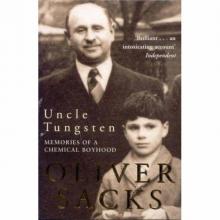 Uncle Tungsten
Uncle Tungsten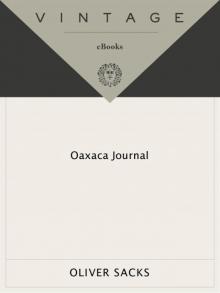 Oaxaca Journal
Oaxaca Journal Musicophilia
Musicophilia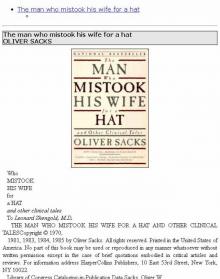 The man who mistook his wife for a hat
The man who mistook his wife for a hat 1989 - Seeing Voices
1989 - Seeing Voices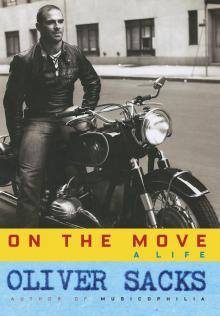 On the Move: A Life
On the Move: A Life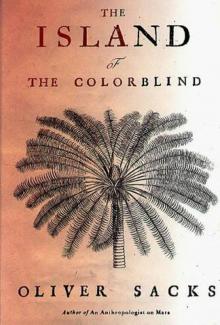 1996 - The Island of the Colorblind
1996 - The Island of the Colorblind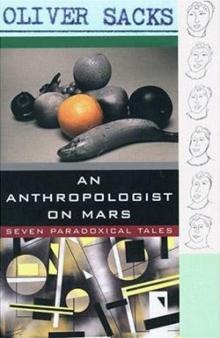 An Anthropologist on Mars: Seven Paradoxical Tales
An Anthropologist on Mars: Seven Paradoxical Tales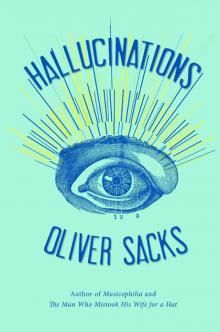 Hallucinations
Hallucinations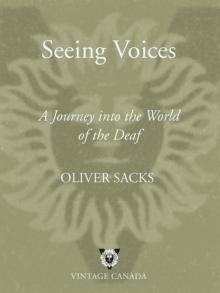 Seeing Voices
Seeing Voices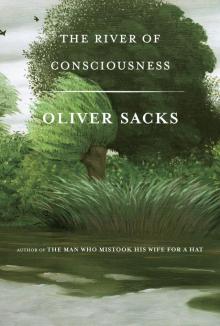 The River of Consciousness
The River of Consciousness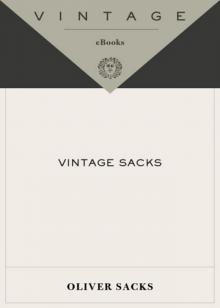 Vintage Sacks
Vintage Sacks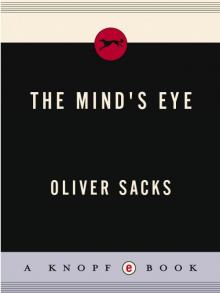 The Mind's Eye
The Mind's Eye Everything in Its Place
Everything in Its Place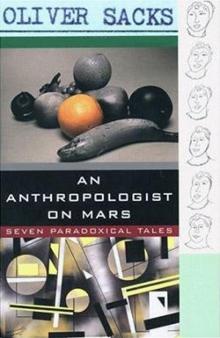 An Anthropologist on Mars (1995)
An Anthropologist on Mars (1995)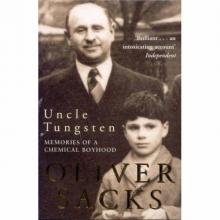 Uncle Tungsten: Memories of a Chemical Boyhood (2001)
Uncle Tungsten: Memories of a Chemical Boyhood (2001)